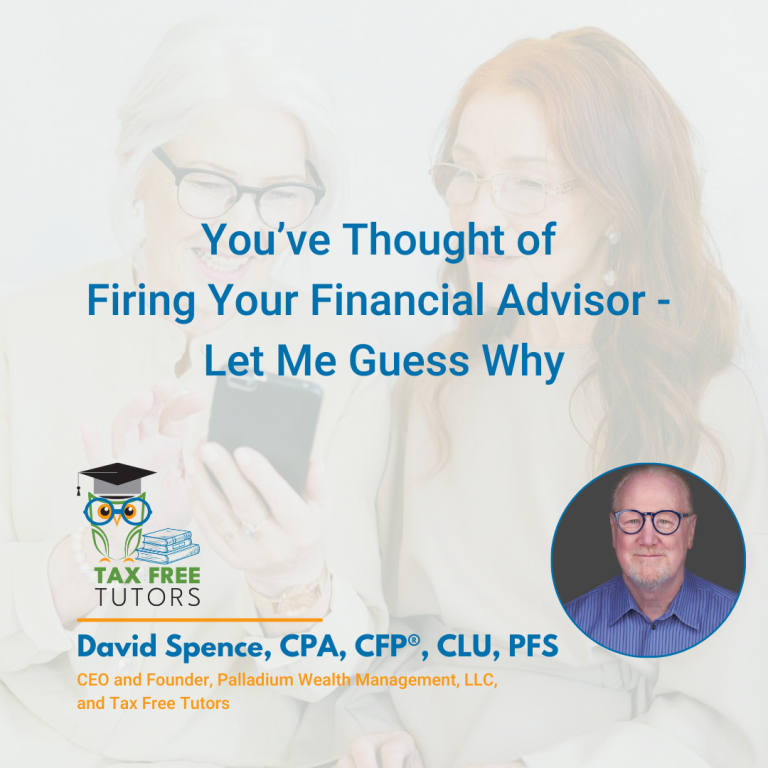Fee-only financial advisors will tell you they are better than advisors who earn commissions, because the latter are more interested in big commissions when you purchase products based on their advice. That’s a conflict of interest, they say, that the fee-only advisor doesn’t have.
This should be recognized as a risk for anyone using the help of a financial services professional. You should know how they are paid as you work with them. However, using a fee-only advisor DOES NOT PROTECT YOU FROM (BAD OR) INADEQUATE ADVICE.
Obviously, you can get BAD ADVICE from anyone, but what do I mean by INADEQUATE ADVICE?
In my 40+ years of experience, I have seen far too many instances where consumers using fee-only advisors were harmed by not having any (or enough) commission-based products, or even an understanding of them. Here’s just one real-life example . . .
I recommended an annuity for 25% of a client’s $4M Rollover IRA. It had annual fees of around 3.5%, and paid an upfront, one-time commission of 7% ($35,000!). A fee-only advisor who charges 1%, using investments costing 0.5% per year, would have made $5,000 every year thereafter. With decent investment performance, the fee-only advisor should, eventually, earn much more on that money than I did on the annuity. So, if I really didn’t get paid more . . . it must be the 3.5% vs 1.5% annual cost that makes me the BAD GUY, right? Here’s why I recommended that the client happily pay the higher fees . . .
We had several good years, then came 2008, when the stock market dropped by nearly 40%. That, plus the drain of the higher fees, left the annuity’s cash surrender value at around $375,000 (Ouch!), just when we were planning on starting the distributions! But, here’s what he got for paying the 3.5% annual fees – two promises from the insurance company:
First, the “benefit base” (from which his annual withdrawals would later be taken) would equal the greater of the actual cash surrender value ($375K) or the original purchase price increased by 6% per year until the first withdrawal (around $600K in this case). Second, he could withdraw 7% per year for life – even if the cash value fell to $0 – if he waited until age 70 before taking withdrawal #1 (part of our plan all along).
He could now count on $42,000 a year as long as he lived . . . completely NET OF ALL FEES. I.E., the fees did not reduce the promises, just the actual cash surrender value. The fees did not matter at all! That guaranteed payment represented an 11% withdrawal rate (compared to the actual value). Most advisors suggest no more than 4% withdrawals to be safe!
Just to show off for my fee-only frenemies, I converted the annuity to Roth and had my client pay the taxes using other funds. The IRS Form 1099 showed $375,000 as the taxable Roth conversion (NOT $600K!). Now, the $42,000 per year is all tax-free.
THERE IS ABSOLUTELY NO CHANCE A FEE-ONLY ADVISOR COULD HAVE ACHIEVED THE SAME OUTCOME. Be careful what you believe!
Please follow me and visit taxfreetutors.com for more stories and valuable lessons!


